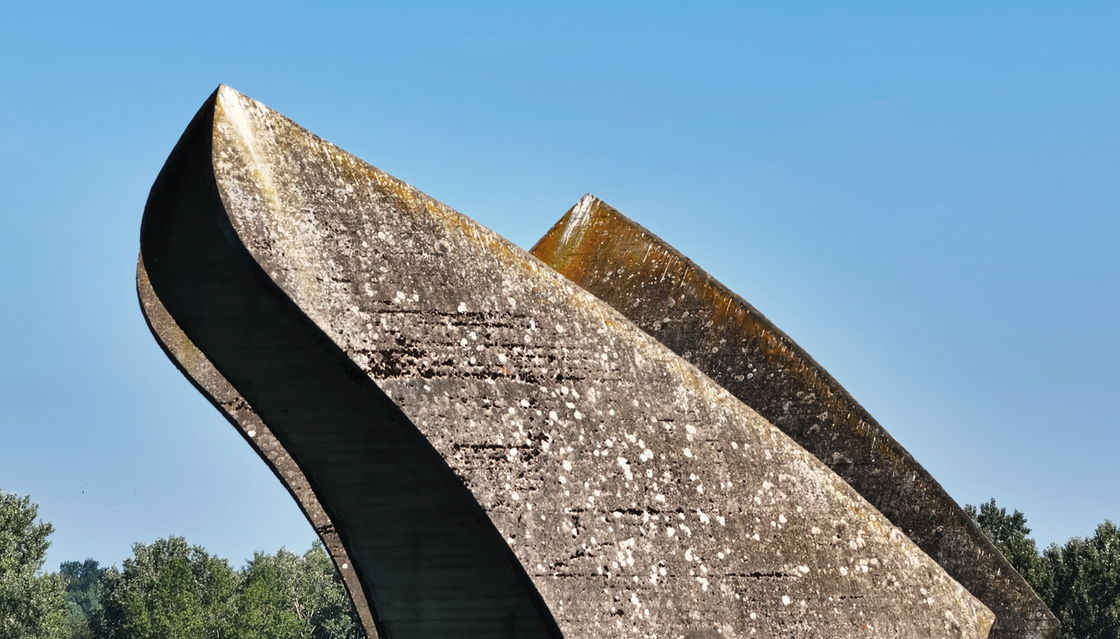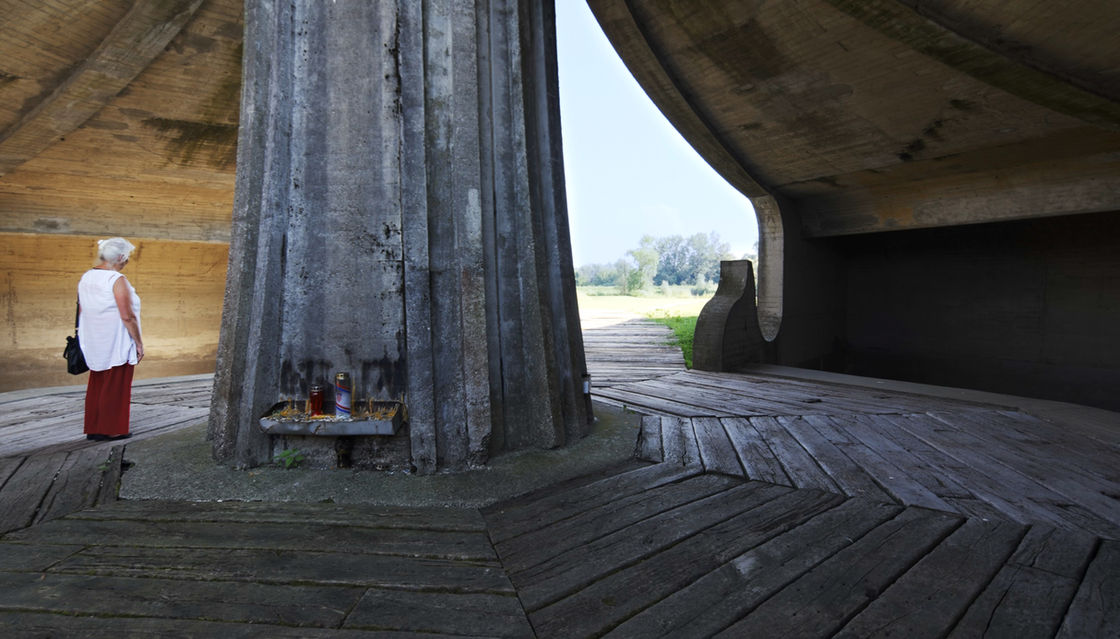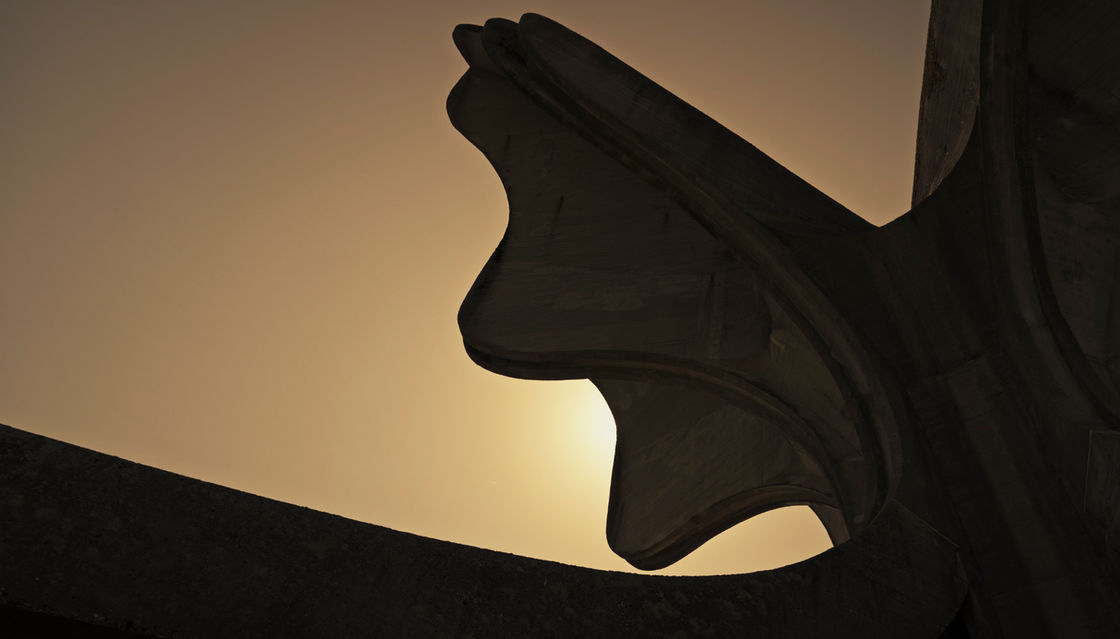How it all began
Slobodište (Freedom) Memorial Complex — Kruševac, Serbia (1965)
Designed by architect Bogdan Bogdanović, this memorial complex commemorates the hundreds of Partisan soldiers and civilians executed in the city between 1941 and 1944 during the German occupation.
On the day I filmed, with the temperature reaching 38°C, I spent several hours alone at the site, accompanied only by birds, bees, and butterflies. In their presence, I felt the flow of transcendence from life to death, as if the valley’s winged creatures echoed the spirit of the monument’s sculpted forms.
" I feel freedom, sunny summer landscapes stay calm and quiet below my spread wings and open eyes.
Death is a transcendental voyage".
Hrib Svobode (Freedom Hill) Memorial — Ilirska Bistrica, Slovenia (1965)
Designed by sculptor Janez Lenassi and architect Živa Baraga-Moškon, this memorial is dedicated to the fighters of the 4th Yugoslav Army who liberated this area from the Germans during World War II, and honors the partisans from the overseas brigades who fought in foreign lands.
What fascinated me here was the way its creators integrated curved shapes within a cubic structure. While the forms allude to the underground caves of this region, they also evoked for me a dimension of time and space that extends beyond the rough materials and textured surfaces.
"I hear deep silent echoes: past, present and future beating at the same time. Death is endless peace".
Popina Memorial Park — Popina, Serbia (1981)
Designed by architect Bogdan Bogdanović, this memorial marks the site of the first full frontal confrontation between Partisan forces and the occupying German army.
Its imposing geometric sculptures rise atop a hill, surrounded by trees whose leaves rustle vigorously in the wind. At times I felt peace, at other moments fear — a feeling that dissolved with the gentle touch of a butterfly.
I travel across portals of light and shadows. The wind whispers ancient memories and sings songs of joy. Death is transmutation".
Flower Monument — Jasenovac, Croatia (1966)
Designed by Bogdan Bogdanović, this memorial stands on the site of a former forced labor and extermination camp. It honors the hundreds of thousands of Serbian victims executed by the extremist Independent State of Croatia (NDH) and administered by the fascist Ustaše regime, supported by the Nazis.
Under the intense summer heat, the desolation I felt here was immense. Yet it was a gift to witness a woman praying — meditating in silence, unaware of my presence. Through her, I understood the meaning of the entire place.







































